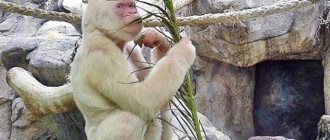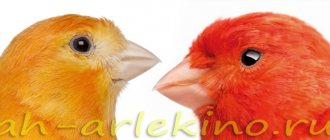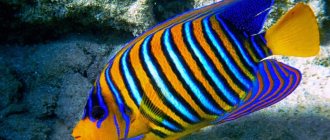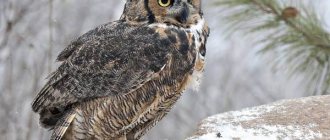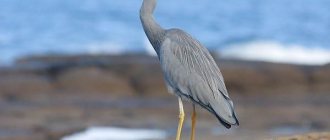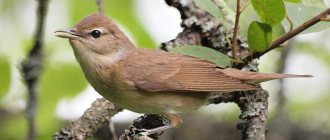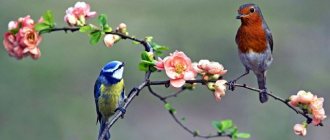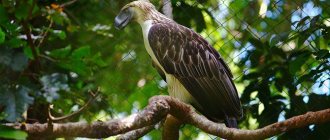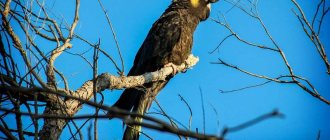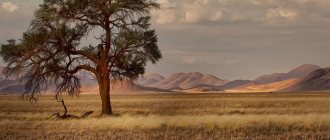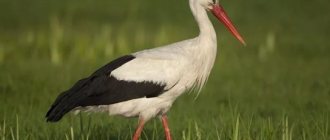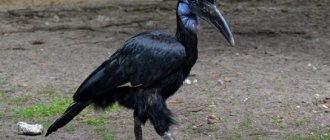While surfing the Internet, I came across a photo of an interesting bird. She simply shocked me with her colorful plumage, which aroused admiration and charged me with positivity. And in this article I will talk about the brightest birds on Earth.
After some searching, I found out its name - it was Gould’s finch, and after that I decided to find a dozen more positive birds and make a rating of the best ones. Moreover, such feathered beauties as owls, falcons or eagles will not be included in the rating due to their excessive predatory nature, which does not correspond to the concepts of positivity. Let's start with this first representative of birds, which so sank into my soul.
Gould's finch - bright and beautiful
This bird species was named after the wife of the English animal artist John Gould, who discovered this colorful bird during his trip to Australia in the mid-19th century. These birds belong to the family of weaver finches and are called “Google birds” by some for their variegated colors (the Google search engine is known for its variegated colors).
This species of bird has such a variety of types of plumage and has two or three types of head coloring that it is simply impossible for ornithologists to distinguish subspecies of these birds. Moreover, in this they are “helped” by the birds themselves, who mate freely, not paying attention to the variations in the colors of their partners.
Beautiful bird with a crest - blue jay
This bird stands out among all birds with its long blue tail and the same bright blue crest. The habitat of this colorful bird of the corvid family is North America. They live in pairs or small family flocks, but during migration they form large groups.
Birds are distinguished by their ability to make unusual sounds and imitate the voices of various birds, including numerous predators from whose attacks they suffer. This allows them to warn their relatives about danger, as well as scare away other predators that have invaded their habitat.
Blue jays do not migrate and, as a result, are required to store supplies for the winter. And usually a jay prepares about 3-5 thousand acorns. Moreover, an interesting fact is that at one time these birds can bring 5 acorns - 2-3 pieces in the crop, one more in the mouth and one in the beak.
Duck beauties Carolinka and Mandarin
These two birds of the duck family, despite their bright plumage and some similarity in beauty, live in completely different places. The distribution range of the Mandarin duck is East Asia and can sometimes be found in the Russian Far East. The natural distribution area of Karolinka is North America.
The difference between birds is also manifested in the habitat of these birds. So, if the mandarin duck loves the forested areas of mountain rivers, then the caralina ducks are more attracted to shady forest reservoirs. Now both of these species of birds are listed in the Red Book and hunting them is prohibited. In autumn they can often be found far from their natural habitats, since for their bright features in many European parks they are bred for decorative purposes.
The most colorful pigeon breed is the Crowned Pigeon.
There are almost eight hundred breeds of pigeons in the world, one stealing the other. Moreover, the cost of some of them reaches tens of thousands of dollars. I will talk about one of the genera of the pigeon family - the Crowned Pigeon. This genus includes three types of these beautiful birds - fan-crested, chestnut-crested and blue-crested, which, despite some external differences, have a single similarity - a bright and colorful headdress of a fan-shaped crest.
The habitat of these birds is New Guinea. Most often they live in swampy sago palm forests and live in pairs or small groups. Particularly interesting for us is the method of attracting females - the males literally beat the drum, since this is how we hear the sounds pouring from the beaks of pigeons.
The fan-crowned dove is considered the most beautiful in this genus . This individual has a chestnut-blue color on the lower part of the body, slate-blue tones on the upper part and a beautiful crest on the head, consisting of fluffy feathers, at the ends of which there are small triangular peaks.
The next in the genus, the blue-crested crowned pigeon got its name because of its color, which, unlike the fan-crested pigeon, is almost entirely blue. Only on the wings can you see splashes of dark chestnut color. In these pigeons, the crest on the head does not have clear peaks and ends in a chaotic manner.
And the last representative of the genus is the chestnut-breasted crowned pigeon . As the name of the bird suggests, it has a chestnut-brown color on its chest. Otherwise, it is similar to the blue-crested pigeon.
Kingfisher
The bird got its name due to its low body temperature, which can be felt when holding a kingfisher in your hands. Its legs are very small, so it is impossible to walk on them - the bird moves on short flights. This beauty attracts attention with its bright plumage: it is replete with harmoniously combining blue and orange flowers.
The kingfisher settles close to streams or rivers, and in other words, next to a source of food. It eats small fish, which its blue plumage helps to hunt, camouflaging it while hovering over the water.
It is interesting that the male shows attention to the lady of his heart by presenting her with fish. Accepting the gift indicates mutual sympathy and means consent to create a couple. They live together only during the period of raising offspring, and spend the wintering separately. But with the onset of spring, each of them returns to last year's nest, where they are reunited again.
The reddest bird is the Northern Cardinal.
This beautiful, medium-sized songbird of the passerine family was discovered in the mid-19th century in both parts of America. And now the representation of northern cardinals includes 19 varieties. Their distinctive feature is a sparkling dark red color throughout the body, a black mask over the eyes and a bright coral-colored beak.
Most often, this bird can be found in the southern parts of Canada, the eastern states of the United States and Mexico. This bird, unlike most of its relatives, does not shy away from people. And very often near houses you can hear their variety of songs. It is their bright singing style that sets them apart from all other representatives of birds.
The Northern Cardinal uses a single whistle to scare away other males from its territory. The other is used to attract females. And with the help of the third, they look for their mate in the dark.
Interesting fact. This bird is the official symbol of seven American states.
Guiana cock of the rock
A bird the size of a sparrow literally glows like an orange spot against the backdrop of the vibrant colors of the tropical forests. At the same time, females of this species have to be content with a more discreet brown outfit. The feathered creature got its name due to its preference for nesting on the tops of rocks and boulders, as well as its characteristic crescent-shaped comb that carefully hides its beak.
The Guiana cock of the rock is well known for its mating ritual, which the males approach very responsibly, even despite the lack of desire to create a pair. The gentleman occupies a small area, clears it of debris, and then walks decorously around his territory, showing off his luxurious plumage and lush crest to the ladies nearby. The female is by no means frivolous and chooses among the presented candidates the most worthy, in her opinion, and after contact she devotes herself to creating conditions for future offspring. The male remains in his area, waiting for the next lady of his heart.
Hoopoe - a colorful swear word with an interesting beak
How often have we heard the phrase “What a hoopoe you are!”, which served as a sarcastic perception of you in the eyes of others. However, this may actually be a valuable compliment, since this bird is actually one of the most bizarre of all birds.
Outwardly, the hoopoe looks awkward - it has a small body with a funny crest on its head and a huge elongated beak. At the same time, he not only flies quickly, but also runs perfectly on the ground. In addition to their gorgeous red crest, hoopoes have large black and white striped wings. At the same time, the entire body of the hoopoe is covered with red feathers.
The population of these birds in autumn is extensive. They can be seen in Portugal and Finland, China and India, on the African continent and in Siberia. Hoopoes will always prefer to settle in an open area among small trees rather than choose a large noisy forest. It is especially worth noting this interesting feature. If the hoopoe is overtaken by danger on the ground, then it takes an unusual pose - it presses against the ground, spreading its wings wide and sticking its beak up.
Rainbow toucan bird with a "happy beak"
This colorful bird is found in the Central Americas and is the largest specimen of the toucan family. She has black iridescent plumage with bright yellow coloring on her chest and cheeks. However, such a “bright face” distinguishes this bird from other representatives of birds, and its unusually large and beautiful beak has a green-red tint. This toucan's beak is so huge that it occupies a third of the bird's entire body.
Another interesting feature of rainbow toucans is that they do not like to fly and often move by jumping through tree branches. These birds usually live in small flocks of 5 - 10 individuals in tree hollows. Moreover, an interesting fact is that because of their large beak, in order to save space in small hollows, toucans sleep, hiding their beak under the wing of their neighbor.
Due to its unusual color and beak shape, as well as its good intelligence, this bird is easily tamed and can easily be found in captivity as pets.
Lori parrot
We often see parrots, which are mostly endowed by nature with bright colors. However, among parrots there are certain representatives who are considered the most beautiful. One of these colorful flying creatures is the Lorian parrot. A specific feature of the bird is a tongue with a brush, thanks to which the Lori parrot collects pollen and nectar, like a bee.
Mythical Bird of Paradise
Birds of paradise, heroes of various myths and fairy tales, are actually the closest relatives of the familiar crows and sparrows. These beautiful and positive birds live on the islands in New Guinea and number as many as 45 species.
Due to such a huge number of species of birds of paradise, it is simply impossible to create any kind of holistic image of them. Some individuals have bright plumage, most often in red, blue and yellow colors. Others have brightly colored plumage on their heads that makes them stand out from other bird species. And still others have a bright fluffy tail. To fully describe their unusual characteristics, it is worth citing several different representatives of these positive birds. And then everything will become clear to everyone.
- The ribbon bird of paradise has the longest tail, which is three times the length of the bird's body itself.
- The blue bird of paradise shows its unusual plumage only during mating displays and upside down
- The six-feathered bird of paradise has six feathers on its head, comparable to the length of the bird's entire body, with tassels at the ends
- Wilson's Royal Bird of Paradise has an unusual tail with feathers curled inward.
Livingston's bananaeater
Livingston's Baneater or Helmeted Turaco lives in African forests or savannah. The name of the bird is a little misleading and one might involuntarily think that the beautiful bird eats bananas, but this is absolutely not the case. The Livingston's bananaeater prefers to eat berries, insects or young shoots of plants. A funny crest and long tail make the bird original, and the green and blue iridescent color of the feather makes you spend hours admiring the beauty of the Livingston banana-eater.
Golden pheasant - a symbol of dignitaries in Ancient China
This most colorful member of the pheasant family is native to the highlands of subtropical China. And the most favorite place for their settlement is bamboo thickets near the foot of the mountains. In the wild, they are most often accustomed to living alone or in small groups.
Now this bird is one of the most popular in pheasant farming. And they gained such popularity due to their beautiful wide crest, long mantle collar and bright tail, which consists of 18 tail feathers. Such bright coloring and beautiful plumage allowed the golden pheasant to rightfully bear the title of one of the most beautiful birds.
Interesting fact. Despite the fact that these birds can fly, when danger arises, they prefer to flee and only in extreme cases fly up onto branches.
Long-tailed velvet weaver
Nature has endowed the long-tailed velvet weaver with a chic black tail that flows like a widow's veil. It is thanks to this feature that the second name of the beautiful bird is “widow”. The bulk of velvet weavers are found in South Africa. Females can be distinguished from males by the length of their black tail. In a male it reaches forty centimeters, which is a couple of times the length of the beautiful bird’s body itself.
Long-legged and romantic Pink Flamingos
The list of bright, positive birds would be incomplete without one of the most “fiery” birds - Pink Flamingos. These birds of the “morning dawn” have soft pink plumage and, due to their charm, give everyone harmony and inspiration.
Flamingos live in large colonies along the shores of lakes and reservoirs, and in some cases the number of birds in a colony reaches hundreds of thousands. Flamingos can be found in Africa and Central and East Asia, South America and the Caucasus. In Europe, they can most often be found in Spain, Italy and... in zoos. This particular bird can be found in almost any zoo in the Old World.
Interesting fact. Flamingos, like most long-legged birds, can often be seen standing on one leg. This uncomfortable and difficult position, in the opinion of many of us, actually requires absolutely no effort on the part of the flamingo, and it is used by them to minimize heat loss.
After such an interesting article about the most colorful birds in the world, it’s worth reading about ten equally beautiful animals on the planet that radiate positivity and delight us.
LiveInternetLiveInternet
Birds are beautiful creatures by definition, and organizing a beauty contest among birds is not an easy task.
However, subjectively, among more than 9,800 species - that’s how many birds live on our planet - we can single out a number of beauties that invariably attract the gaze of people and evoke undisguised admiration and delight with their amazing appearance. Passeriformes There are over 5 thousand species of passeriformes in the world, which is about 60% of the total number of species.
In the photo - Long-tailed broadbill, or long-tailed broadbill (Psarisomus dalhousiae) The most numerous order of birds can be found everywhere except Antarctica and some oceanic islands. These little ones are perfectly adapted to life in trees, feeding on insects and seeds. In the photo - Blue-tailed pitta (Pitta guajana)
Passeriformes have well-developed nest building and are predominantly monogamous. The entire order is divided into four suborders: broadbills, tyrants, primitive passerines and song passerines. In the photo - Black-headed Pitta (Pitta sordida)
The suborder song passerines (Oscines or Passeri) includes more than 65 families. Most birds are migratory and live in forests. In the photo - Red-winged fairywren (Malurus elegans)
With few exceptions, songbirds benefit humans by exterminating masses of small insects. In the photo - Hammered Wagtail (Epthianura)
Myzomela (Myzomela taveuni)
Red-browed Rainbowbird (Pardalotus rubricatus)
Robin flycatcher (Eopsaltria)
Dwarf long-tailed grubeater (Pericrocotus cinnamomeus)
Burgundy Oriole (Oriolus traillii)
African Golden Oriole
White-throated Fig Oriole (Sphecotheres vieilloti)
Bird of paradise (Paradisaeidae)
Blue jay (Cyanocitta cristata)
Peruvian jay, or Peruvian blue crow (Cyanocorax yncas)
Common jay or common jay (Garrulus glandarius)
Gould's finch (Chloebia gouldiae)
Long-tailed green parrot finch (Erythrura prasina)
Zebra finch (Taeniopygia guttata)
Purple tanager warbler (Ergaticus ruber)
Red-bellied Mountain Tanager (Anisognathus igniventris)
Blue-winged Mountain Tanager (Anisognathus somptuosus)
Purple Honeyeater Tanager (Cyanerpes caeruleus)
Blue Dacnis (Dacnis cayana)
Red-headed Warbler Tanager (Hemithraupis ruficapilla)
Paradise tanager (Tangara chilensis)
Blue-headed tanager (Tangara cyanicollis)
Speckled Tanager (Tangara guttata)
Black-headed goldfinch or common goldfinch (Carduelis carduelis)
Siberian lentil (Carpodacus roseus)
West African fireweaver (Euplectes franciscanus)
Long-tailed velvet weaver (Euplectes progne)
Red-billed weaver (Quelea quelea)
Red cardinal or Virginia cardinal (Cardinalis cardinalis)
Painted Bunting Cardinal (Passerina ciris)
Garden Bunting (Emberiza cirlus)
Red-crested cardinal bunting (Paroaria coronata)
Saffron finch or saffron sicalis (Sicalis flaveola)
Collared Sunbird (Hedydipna)
Great tit, or great tit (Parus major)
Rufous-headed Long-tailed Tit (Aegithalos concinnus)
Madeira kinglet (Regulus madeirensis)
New Guinea swallow (Hirundo neoxena)
Yellow-faced mino (Mino dumontii)
Tesia
Bali starling (Leucopsar rothschildi)
Mousebirds (Coliidae) The order consists of six species. These birds got their name from the color of their plumage and their habit of moving with lightning speed in the bushes. In the photo - Blue-capped mousebird (Urocolius macrourus)
Trogoniformes An order of birds that live in the tropical forests of Asia, Africa and America. They feed by flying up from branches and grabbing insects in flight or picking small fruits. In the photo - African Bridle Trogon (Apaloderma narina)
Cuban trogon (Priotelus temnurus)
Quezal (Pharomachrus mocinno)
Parrots (Psittaciformes) This order of birds includes about 350 species, most of which have bright exotic colors. The size of an adult parrot ranges from 9.5 cm to 1 meter. In the photo - Corella nymph.
The Cockatoo family (Cacatuidae) is distinguished separately. These large parrots live in Australia, live in flocks and live up to 60-80 years. In the photo - Black Palm Cockatoo (Probosciger aterrimus)
In addition to their external features, cockatoos are popular as one of the most interesting and fun birds to keep in captivity. They become very attached to people. In the photo - Great yellow-crested cockatoo (Cacatua galerita)
Helmeted Cockatoo (Callocephalon fimbriatum)
In the family Psittacidae, the Loriinae are small arboreal parrots that live in Australia, New Guinea, eastern Indonesia and the Philippines. In the photo - White-backed loris (Pseudeos fuscata)
They feed primarily on pollen and nectar (from approximately 5,000 varieties of flowers), as well as soft, juicy fruits. In the photo - Cherry-red lorikeet (Trichoglossus rubiginosus)
Ornamented Lorikeet (Trichoglossus ornatus)
Yellow-backed loris (Lorius garrulus)
Representatives of the subfamily of True parrots (Psittacinae) are also unusually beautiful. Known for their multi-colored plumage and the presence of a large hooked beak. In the photo - Common rosella (Platycercus eximius)
Parrots of this genus live in the tropical forests of South and Central America. They live in small flocks. Pictured: Edwards's Pygmy Parakeet (Psittaculirostris edwardsii)
Green-winged Macaw (Ara chloroptera)
Hyacinth Macaw (Anodorhynchus hyacinthinus)
Blue-and-yellow macaw (Ara ararauna)
Sun Aratinga (Aratinga solstitialis)
Diurnal raptors (Falconiformes) This order of birds is distinguished by a strong physique, broad chest and well-developed muscles. In the photo - Secretary bird (Sagittarius serpentarius)
The order is found throughout the world, with the exception of Antarctica. Mostly all types of diurnal predators feed on meat - most hunt mammals and birds. In the photo - Osprey (Pandion haliaetus)
American kestrel (Falco sparverius)
African White-throated Vulture (Trigonoceps occipitalis)
Aguja or eagle buzzard (Geranoaetus melanoleucus)
Crane-like birds (Gruiformes) An order of predominantly wading and terrestrial birds, less often nesting in trees. In the photo - Crowned crane (Balearica pavonina)
Species within the order differ greatly in appearance and lifestyle, but they are all united by long legs, a soft gait and incredible grace and elegance. In the photo - Demoiselle crane (Anthropoides virgo)
Crane-like creatures are distributed throughout the world, excluding the Arctic and Antarctic regions. The fauna of Russia includes 23 species. In the photo - Eastern crowned crane (Balearica regulorum)
Striped rail (Gallirallus philippensis)
Lesser plume (Porphyrio martinica)
Coraciiformes Most Coraciiformes are colorful tropical birds with varied lifestyles. They all have only one thing in common - fused toes. In the photo - Common kingfisher (Alcedo atthis)
The order is divided into 7 families: kingfishers, earthen rakshas, rollers, curolids, bee-eaters, momotids and todiids. In the photo - Malachite kingfisher (Alcedo cristata)
The Kingfisher family (Alcedinidae) contains about 90 species of small and medium size. The greatest diversity of kingfishers is found in tropical and subtropical regions. Pictured: Lesser Pied Kingfisher (Ceryle rudis)
Kingfishers live both in forested areas and near water. The latter hunt for small fish by diving under the water with a picket. Their food also includes frogs and insects. Pictured: Red-breasted Pied Kingfisher (Megaceryle torquata)
Malayan alcyone (Actenoides concretus)
Blue-breasted alcyone (Halcyon malimbica)
Brown-backed paradise kingfisher (Tanysiptera danae)
White-necked Alcyone (Todiramphus chloris)
The main distribution area of the Roller family (Coraciidae) is Africa. Some species live in warm temperate or subtropical regions of Eurasia and Australia. In the photo - Bengal roller (Coracias benghalensis)
Rollers feed on insects and like to look out for their prey from an elevated place. Pictured: Blue-bellied Roller (Coracias cyanogaster)
Common roller or raksha (Coracias garrulus)
Bee-eaters (Meropidae) are represented by seven genera, including 21 species. Most representatives of the species live in temperate and tropical parts of Africa. In the photo - Swallow-tailed bee-eater (Merops hirundineus)
Bee-eaters are flocking birds and inhabitants of open spaces; forests are avoided. They nest in colonies in burrows and feed mainly on insects. In the photo - White-throated Bee-eater (Merops albicollis)
European bee-eater (Merops apiaster)
Nubian bee-eater or purple bee-eater (Merops nubicus)
Anseriformes A widespread order of large and medium-sized birds plays an important role in the biosphere of the Earth's temperate latitudes. Some species are also of agricultural importance. In the photo - Black Swan (Cygnus atratus)
Distinctive features of Anseriformes are a weighty body and a relatively small head located on a long neck. In the photo - Red-breasted Goose (Branta ruficollis)
In addition, in birds of the order, between the three forward-pointing toes there are membranes that are important for movement in water. In the photo - Ogar, or red duck (Tadorna ferruginea)
The plumage of birds is waterproof: it is lubricated with a water-protective secretion secreted by special glands on the skin of the animal, which are stimulated by the touch of the beak. In the photo - Peganka, or atayka (Tadorna tadorna)
Basically, Anseriformes live near bodies of water. Many species spend most of their lives in the open sea and return to land only to nest. In the photo - Teal (Anas formosa)
Representatives of this order are distributed on all continents, with the exception of Antarctica. The largest number of different species of Anseriformes can be found in the tropics of South America, Africa and Australia. In the photo - Blue-winged teal (Anas discors)
Killer whale or orca drake (Anas falcata)
Yellow-billed pintail (Anas georgica)
Long-tailed duck, or sauk (Clangula hyemalis)
Mandarin duck (Aix galericulata)
Hoopiformes (Upupiformes) An order of birds, isolated from the order Coraciiformes and consisting of two families. In the photo - Madagascar hoopoe (Upupa epops marginata)
https://www.peoples.ru/friday/150_most_beautiful_birds_in_the_world_.html
